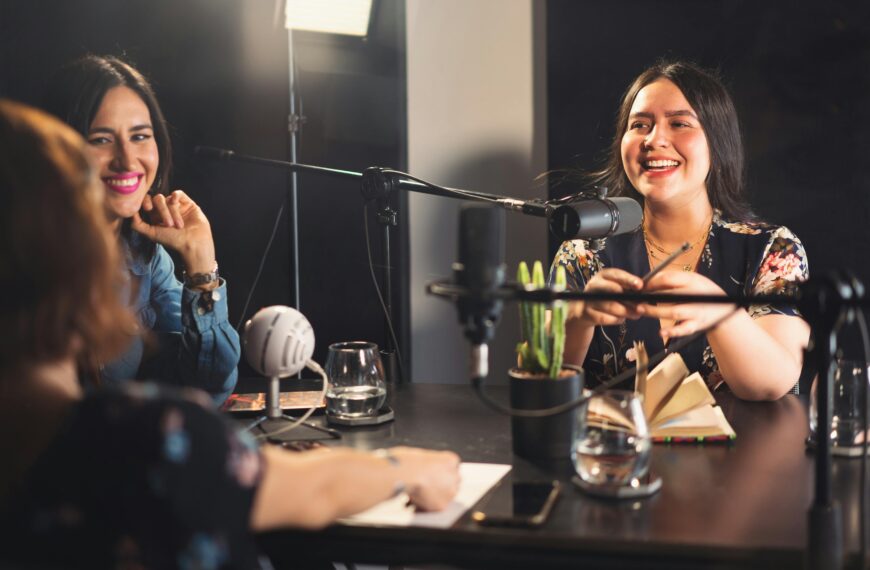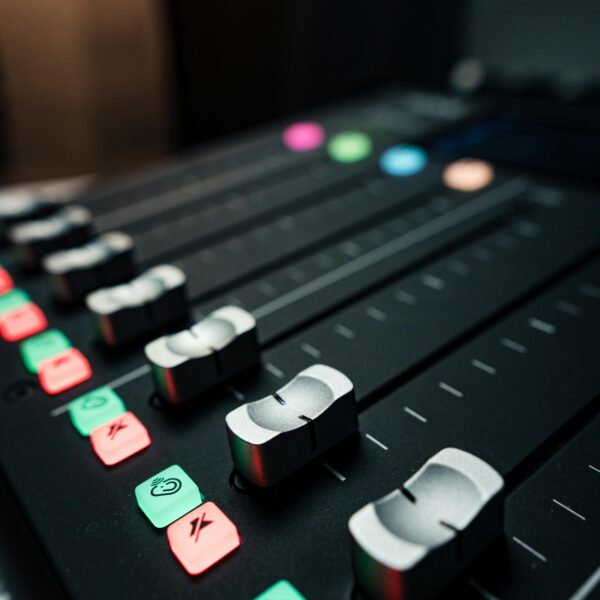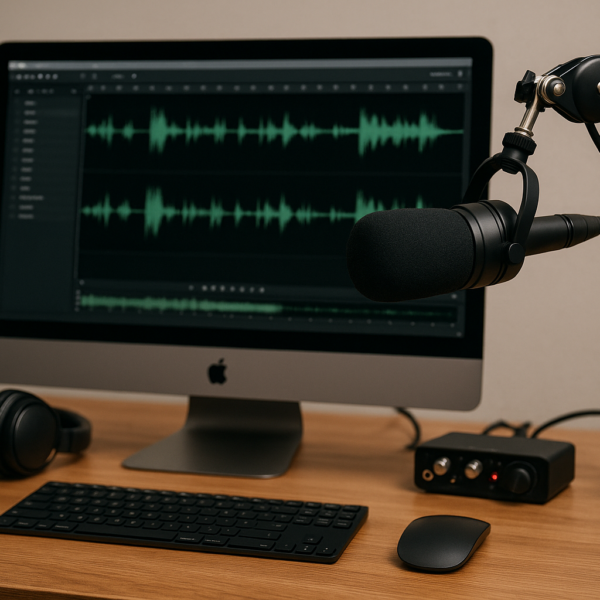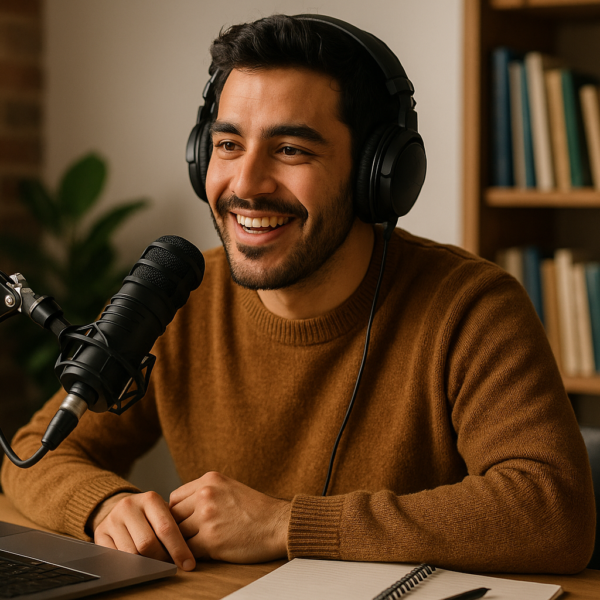What Mics Does Joe Rogan Use?
Joe Rogan uses the Shure SM7B Vocal Dynamic Microphone for his podcast,
and it’s easy to see why.
This microphone is a favorite among professionals because of its amazing sound quality and versatility.
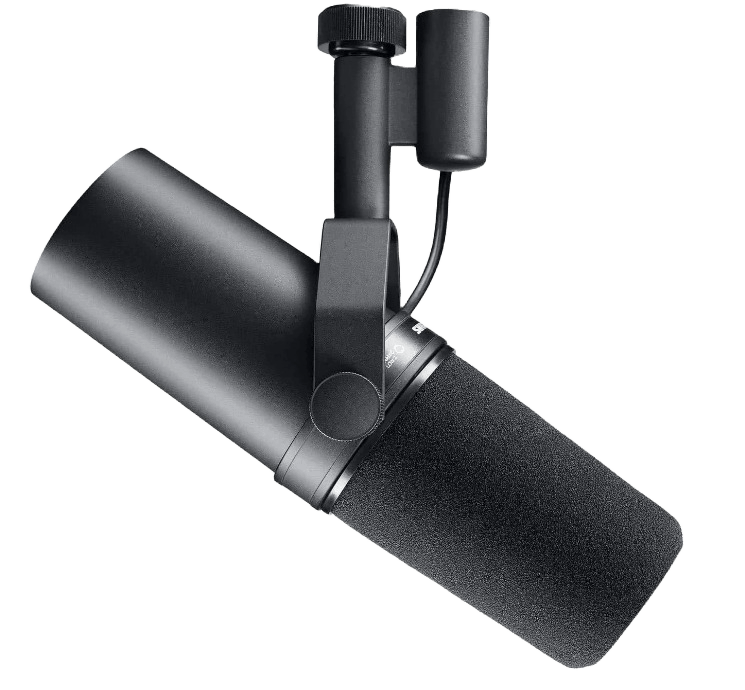
It’s a dynamic cardioid mic that’s perfect for speech. This means it picks up sound from the front while rejecting noise from the sides and back, which is crucial for isolating your voice, especially if you’re recording in a less-than-perfect room.
With my experience with Shure SM7B, the low-end richness it brings to the voice is just unmatched, and the smooth highs make it sound natural. The flat frequency response ensured my voice doesn’t sound overly bright or muffled, and gave a balanced and clear sound.
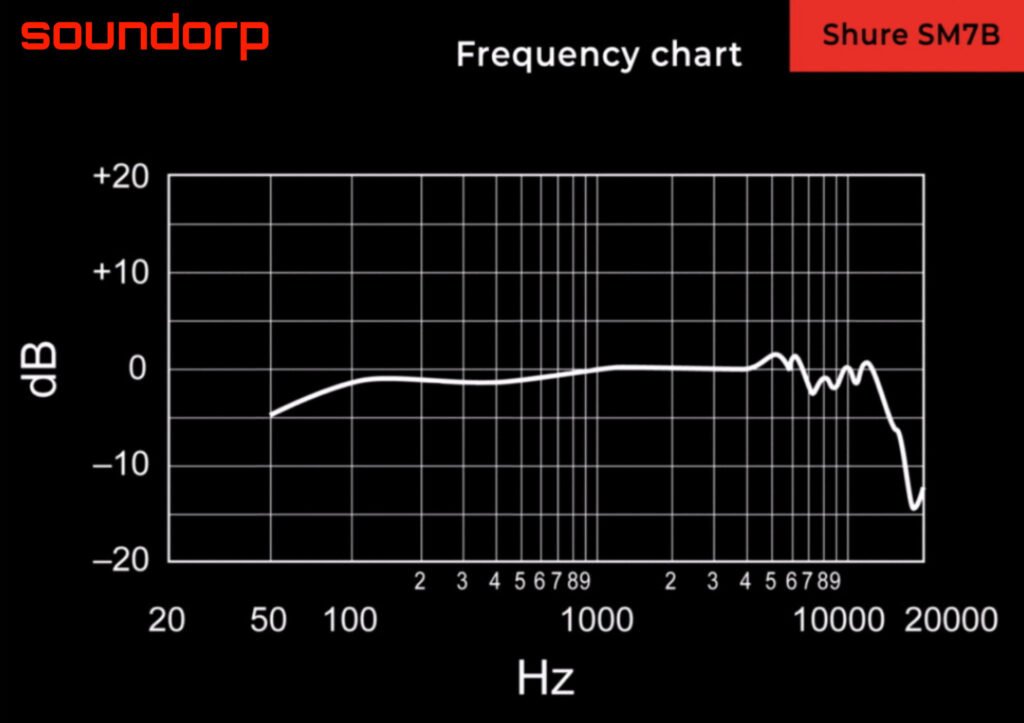
This flat mode works well for both conversation and music, making it ideal for those who want natural audio reproduction. The drawback is that the proximity effect could make low-midrange recording more difficult if you’re recording with an instrument that has a lot of bass or a vocalist who has a very low voice.
However, The mic requires quite a bit of gain, so you’ll need a preamp or a Cloudlifter CL-1 to get the best performance out of it. This can be a bit of a hassle if you’re new to podcasting and don’t have the right gear. But trust me, once you dial it in, the sound is worth it.
Overall, the Shure SM7B is incredibly reliable and offers that rich, professional sound. It’s definitely not a beginner’s plug-and-play mic, but if you’re serious about quality, it’s one of the best investments you can make.
How is Joe Rogan’s Microphone: Features of the Shure SM7B
In the box
As well as the microphone, the Shure SM7B comes with a:
- A7WS Detachable Windscreen
- RPM602 Switch Cover Plate
- ⅝” to ⅜” stand adapter
- Documentation
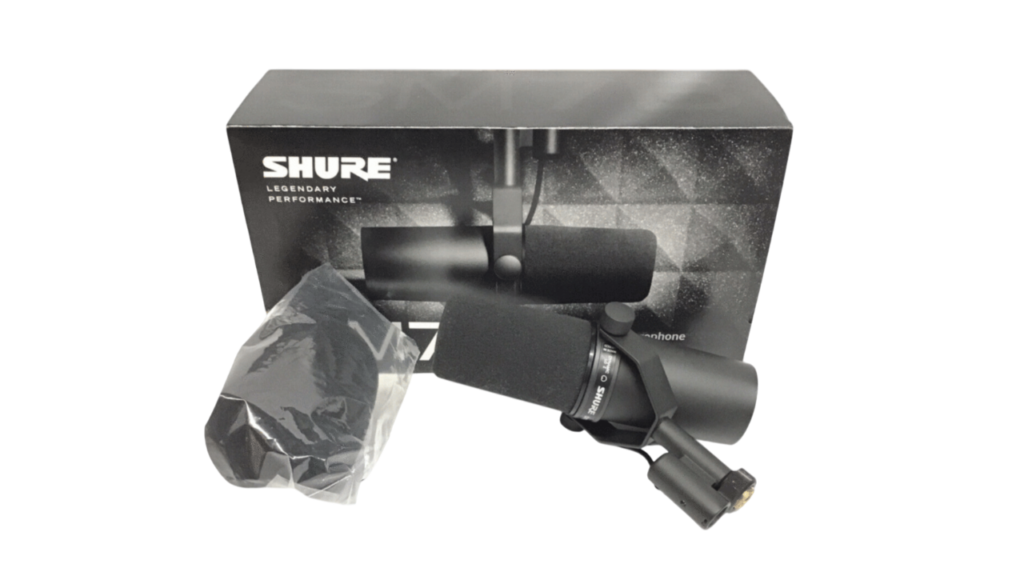
Dynamic Microphone for Noise Control
ThThe Shure SM7B is packed with features that make it perfect for podcasting. It’s a dynamic microphone, meaning it’s built to handle loud sounds without distortion and can block out background noise effectively.
This is a lifesaver if your room isn’t fully soundproof. I’ve recorded in spaces where traffic noise or a noisy AC could ruin the audio, but this mic kept the focus on my voice.
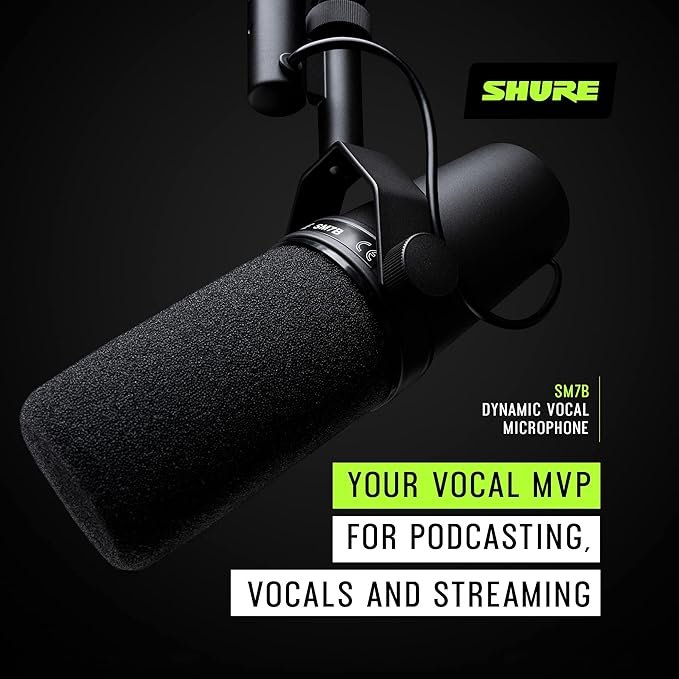
Cardioid Pickup Pattern for Voice Isolation
Another standout feature is its cardioid pickup pattern. It’s super focused on what’s right in front of it, so it won’t pick up typing sounds or someone shuffling papers nearby.
The built-in pop filter is also a huge plus—it tames those harsh “p” and “b” sounds without needing an extra filter dangling in front of your mic.
But I did notice that if you’re not speaking directly into it, the sound can lose some warmth. It’s forgiving, but positioning matters.
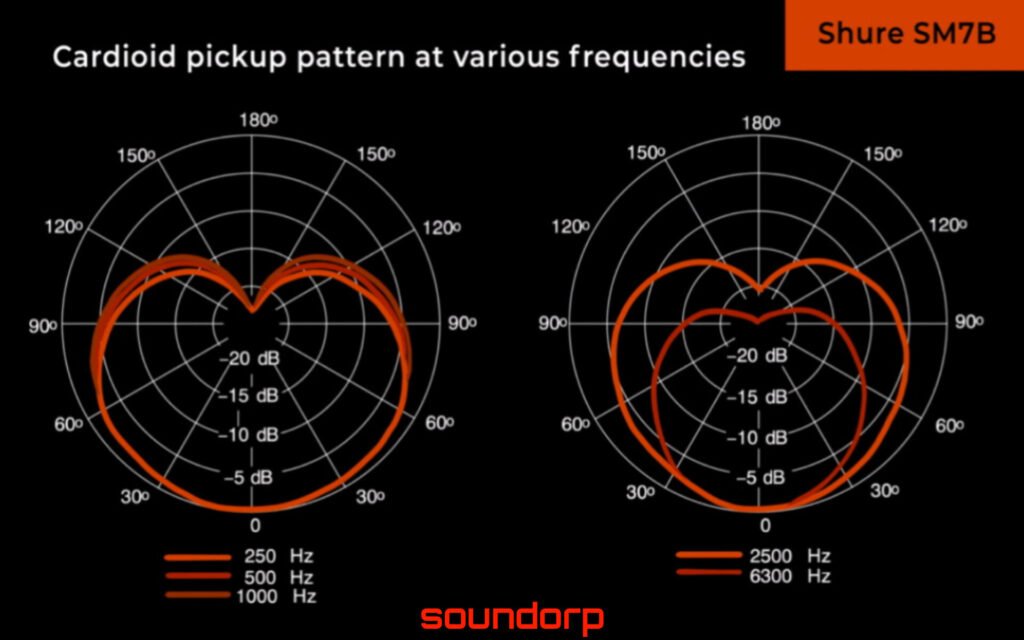
Customizable Sound with Bass Roll-off and Presence Boost
The mic has a switchable bass roll-off and presence boost, which is great if you want to tweak your sound a bit without needing fancy editing tools. I’ve tried the settings, and while I usually keep them flat, boosting the presence really adds some crispness to your voice.
Durable Build for Long-Term Use
One thing people don’t talk about enough is how durable it feels. The Shure SM7B is built like a tank, and it’s heavy. It’s a good thing, but if your mic stand isn’t sturdy, it’ll droop over time. I had to upgrade my stand because of this.
The Gain Hunger Drawback
Honestly, the biggest downside is the gain hunger. You’ll need a preamp or a Cloudlifter to avoid noisy recordings.
It’s frustrating if you’re new and didn’t know this upfront because the extra gear adds to the cost. But once it’s set up, the sound quality is worth every penny. It’s like having a studio in your home!
Why Does Joe Rogan Use this Microphone?
Joe Rogan uses the Shure SM7B because it delivers unmatched sound clarity and consistency.
It’s the kind of mic that makes your voice sound full, rich, and professional without needing heavy post-editing.
I’ve personally experienced how it can handle different tones—whether you’re speaking softly or getting loud, it maintains balance without distortion.
The noise rejection is another huge reason. With its cardioid pattern, it cancels out room noise like fans, chairs creaking, or even the hum of electronics.
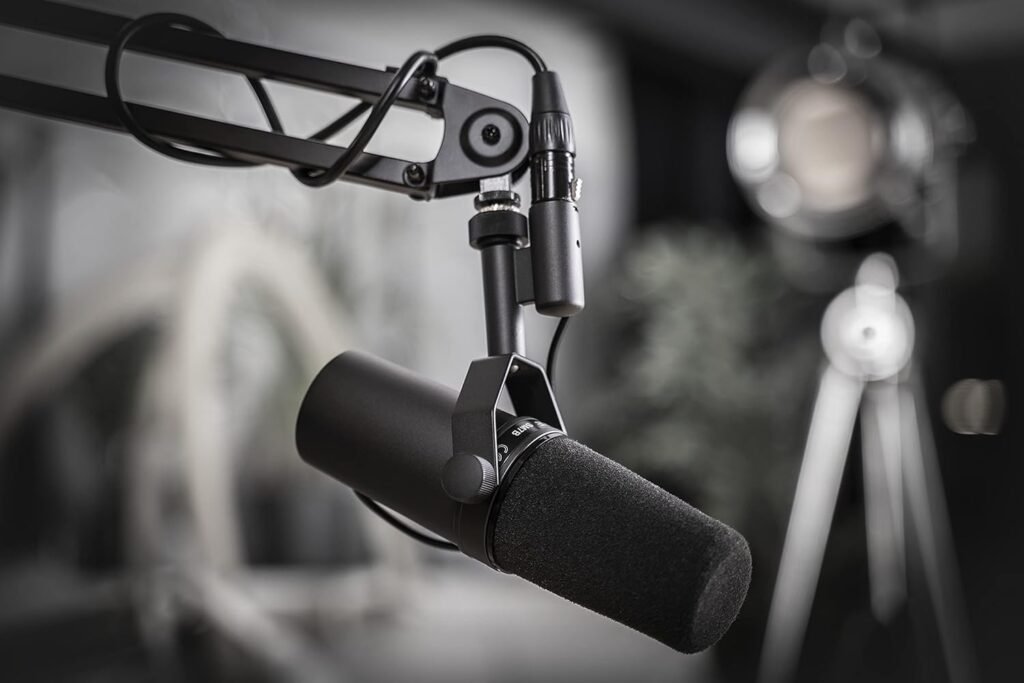
When I recorded in my slightly noisy room, this mic still kept the focus on my voice. I can imagine how useful this is for someone like Rogan, who has guests and equipment running simultaneously.
The durability also makes it ideal for someone recording as frequently as Rogan. This mic is built to last, and you don’t have to baby it. But, it’s not flawless.
The gain issue is real—you absolutely need a preamp or a Cloudlifter CL-1. Without one, the sound is faint and lacks the punch.
I learned this the hard way and had to spend extra money, which can feel like a hidden cost for beginners.
Another thing is its weight and size. If you don’t have a sturdy mic arm or stand, it can sag. Even with Rogan’s setup, you’ll notice a high-quality boom arm is a must to handle the Shure SM7B.
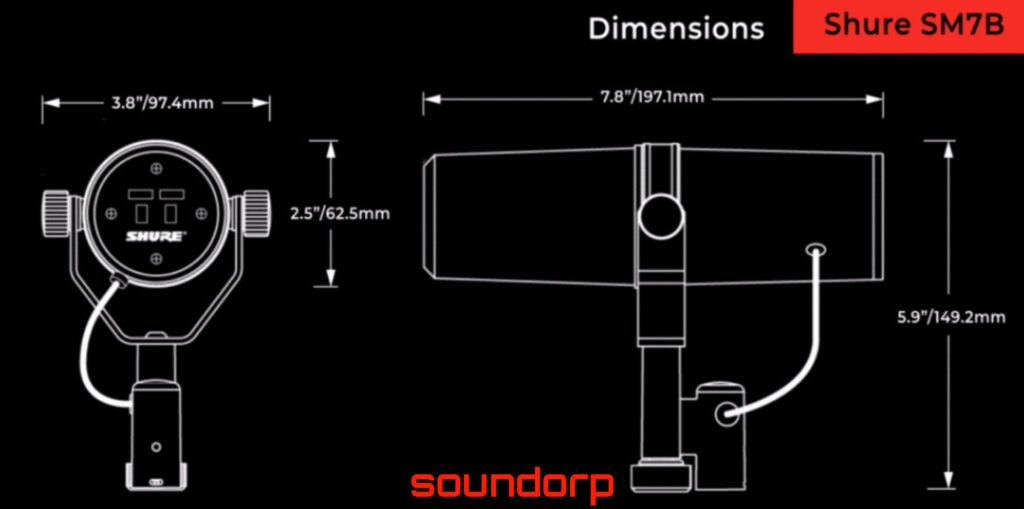
Despite these minor setbacks, it’s clear why Rogan sticks with it. The sound quality, reliability, and ability to handle long recording sessions make it the go-to choice for professional podcasters.
What Additional Equipment Does Joe Rogan Use with his Mic?
Cloudlifter CL-1 for Extra Gain
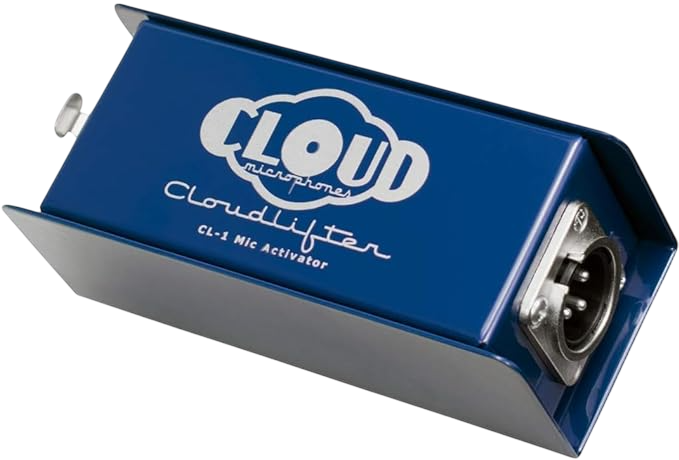
Joe Rogan’s Mic setup isn’t complete without a Cloudlifter CL-1, which is almost a must-have with this mic.
The SM7B needs a lot of gain to sound good, and without a Cloudlifter or a high-end preamp, the audio can feel weak. I’ve tried running this mic without one, and the difference is night and day—trust me, don’t skip this step.
Gator Frameworks Deluxe Boom Arm for Stability
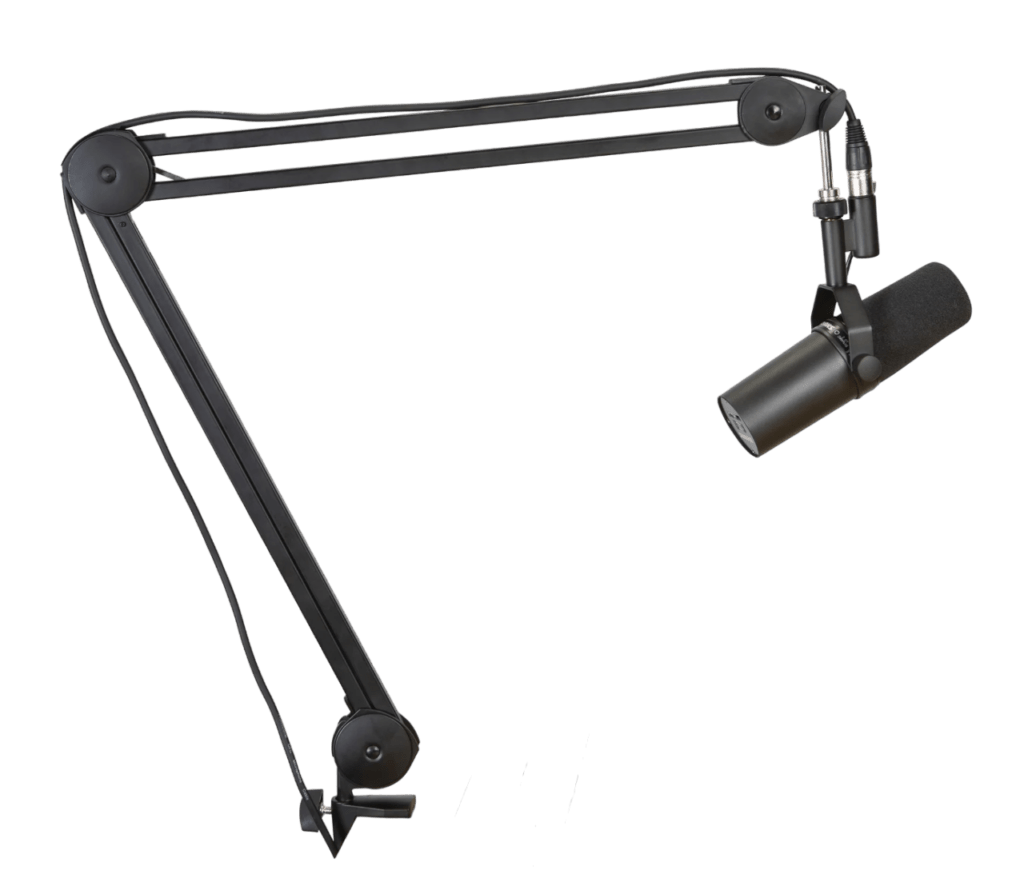
For positioning, Rogan uses the Gator Frameworks Deluxe Boom Arm, which is both sturdy and flexible.
This is essential because the SM7B is heavy, and cheaper boom arms just won’t hold up. I once used a basic arm with this mic, and it kept sagging, making me constantly adjust during recordings.
Sennheiser HD280PRO Headphones for Monitoring
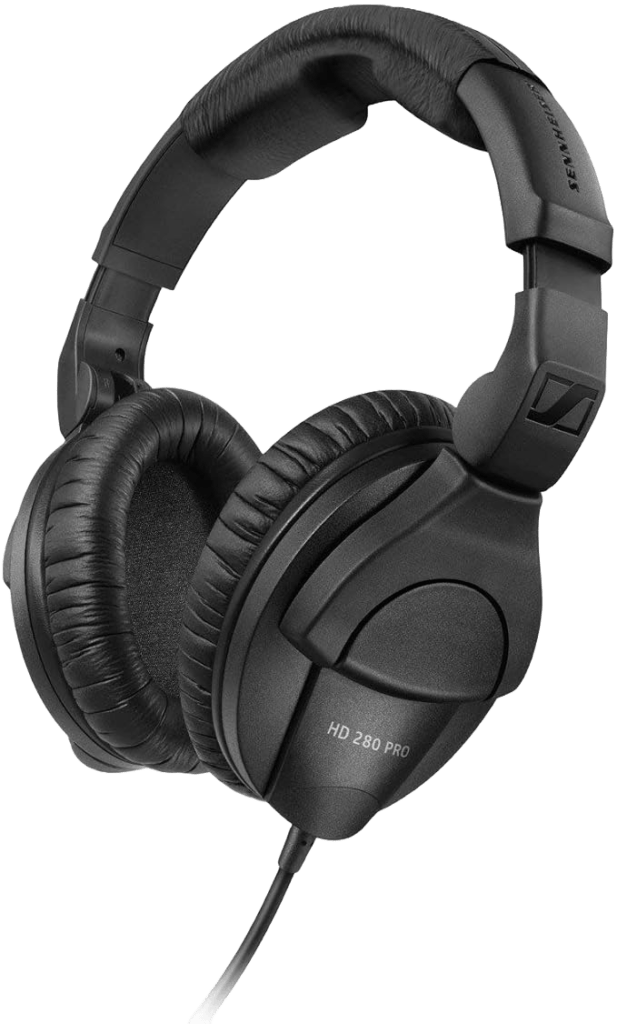
He also relies on Sennheiser HD280PRO headphones for monitoring. These are comfortable for long sessions and provide clear, accurate sound. I’ve used similar headphones, and they’re great for catching little audio issues you’d miss with standard headphones.
However, some people find them a bit tight for extended use, which I noticed too after a few hours.
The Complete Setup: Worth the Investment
The combined setup might seem pricey, but every piece serves a purpose. The Cloudlifter boosts gain without noise, the boom arm keeps the mic stable, and the headphones ensure perfect monitoring.
If you’re serious about podcasting, this gear is worth the investment, but it’s important to budget for the extras since the mic alone won’t get you Rogan-level audio.
I have discussed about the complete Equipment he uses in Joe Rogan Podcast Setup and Equipment List
How Much Does Joe Rogan’s Podcast Microphone Setup Cost?
If you’re wondering how much does Joe Rogan Microphone and other toys cost here’s the breakdown.
The Shure SM7B itself is around $400,
which might seem expensive but is reasonable for a professional microphone. I remember hesitating at first, but after hearing the audio quality, it felt worth every penny. However, the mic alone isn’t enough—you’ll need extra gear to make it work properly.
The Cloudlifter CL-1, which boosts the mic’s gain, costs about $150.
Without it, the audio can sound quiet and underwhelming. I tried skipping it initially and ended up with frustratingly low volumes. Adding the Cloudlifter fixed everything, but it’s an extra expense you have to plan for.
Next,
there’s the Gator Frameworks Deluxe Boom Arm at around $130.
This is essential because the Shure SM7B is heavy, and cheaper arms won’t hold it in place. Trust me, I’ve had those sagging issues with budget stands—it’s annoying and disrupts your workflow.
Lastly,
the Sennheiser HD280PRO headphones, priced at $100, complete the setup.
They’re great for monitoring your audio in real-time and catching little imperfections. They’re comfortable, but after a long session, I did feel some pressure around my ears. Still, they’re better than most alternatives at this price point.
In total, Joe Rogan’s basic setup will cost around $780,
excluding any additional preamps or mixers. It’s an investment, but if you’re serious about podcasting, this setup offers exceptional value. However, if you’re on a tight budget, this might feel overwhelming. A good plan is to build your setup piece by piece as you grow.
Here are some cheap but quality options you can begin with:
- Best Microphone under 100$
- Best USB Mic under 150$
- Best Condenser Mic under 100$
- Best Audio Interface under 200$
However if you think in other ways, you can also select from the Best of the Most Expensive Microphones you should buy.
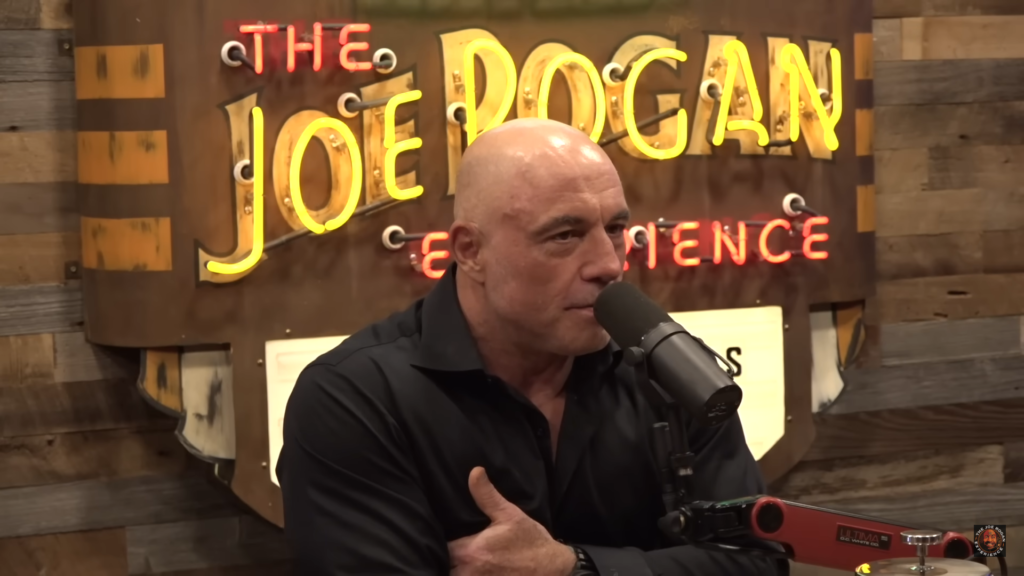
Is the Shure SM7B Worth It for Your Podcast?
The Shure SM7B is worth it if you’re serious about creating high-quality podcasts or voice recordings. It delivers professional-grade audio with incredible clarity and depth.
This Joe Rogan Mic consistently makes my voice sound full and polished.
One of its biggest strengths is its ability to reject background noise. Even in noisy environments, it keeps your voice isolated, which is a huge advantage. But the downside is the gain issue.
Without a Cloudlifter or a strong preamp, it’s frustratingly quiet. I’ve seen people give up on this mic because they didn’t realize it needed extra gear.
Another thing to consider is its price and weight. At $400, it’s not cheap, and the additional costs for the Cloudlifter, a sturdy boom arm, and decent headphones make the total investment significant.
Plus, the mic’s weight can be a hassle if your stand isn’t sturdy enough. I’ve had to upgrade my stand to keep it stable, which added to my overall cost.
That said, once it’s set up correctly, the Shure SM7B delivers an experience that cheaper mics just can’t match. If you’re just starting out, it might not be the best first mic because of the upfront cost and learning curve.
But if you’re looking to take your podcast to the next level, it’s an investment you won’t regret.
Let’s find out what are the pros and cons of this mic:
| Pros | Cons |
|---|---|
| Wide Dynamic Range: Provides clarity and versatility in vocal and instrumental recordings. | Needs to be Close: Requires close proximity, making it unsuitable for users prone to movement. |
| Durability: Known for rugged construction and legendary reliability, offering long-lasting use. | Transient Response: May not capture as much audio detail as condenser microphones. |
| Presence Boost: Enhances vocal quality by compensating for a lack of brightness. | Low Output Level: Older versions may require a pre-amp; newer versions include one. |
| Internal Shock Mount: Absorbs vibrations, eliminating the need for external mounts. | Not Ideal for Whisper Vocals: Challenging to record very quiet sources without sufficient gain. |
| Off-Axis Rejection: Minimizes background and side noise for focused audio capture. | |
| Built-in Pop Filter: Reduces plosive sounds and improves vocal clarity. |
Should You Choose the Shure SM7B for Your Setup?
Choosing the Shure SM7B depends on your goals and setup. If you’re looking for broadcast-quality audio and have the budget, it’s an excellent choice.
The sound is rich, clear, and natural, making it perfect for podcasts, streaming, or even recording vocals. I’ve used it for podcasts where sound quality was a priority, and it never disappointed.
However, it’s not for everyone. If you’re new to podcasting or on a tight budget, the Shure SM7B might feel overwhelming.
It’s not plug-and-play—you’ll need a preamp like the Cloudlifter (that I already said) and possibly a better audio interface, which adds to the cost. I learned this the hard way when I first bought it, thinking the mic alone was enough.
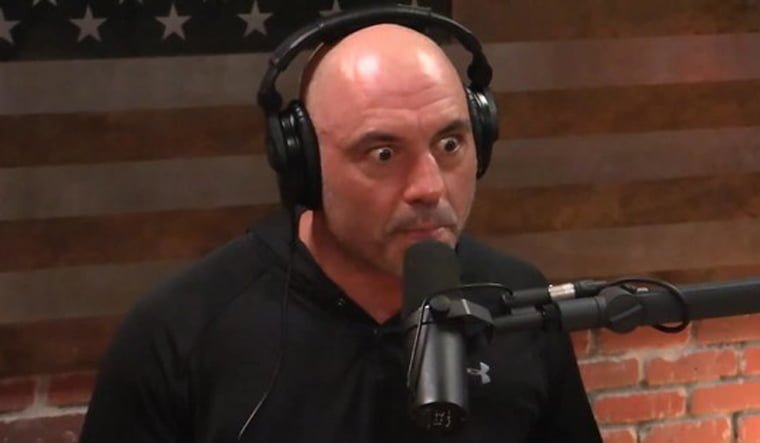
The mic also needs a dedicated space and good positioning. It’s heavy, so cheap stands or boom arms won’t work well.
If your workspace is cramped or you’re always moving your setup, it might not be the best fit. I’ve had instances where setting it up felt like a chore, especially when I didn’t have a solid stand.
On the other hand, if you want to stand out with professional audio, it’s hard to beat.
The background noise rejection, built-in pop filter, and flexibility in sound customization make it worth the investment. Just make sure you’re ready to invest in the supporting gear.
Alternatives to the Shure SM7B for Podcasters
If the Shure SM7B feels out of reach, don’t worry—there are great alternatives. One popular choice is the Audio-Technica AT2020, which is much more affordable at around $100. It’s a condenser microphone, so it’s more sensitive to background noise, but if you’re recording in a quiet space, it offers excellent sound quality. I’ve used it before upgrading, and it was reliable, though it didn’t have the same warmth as the SM7B.
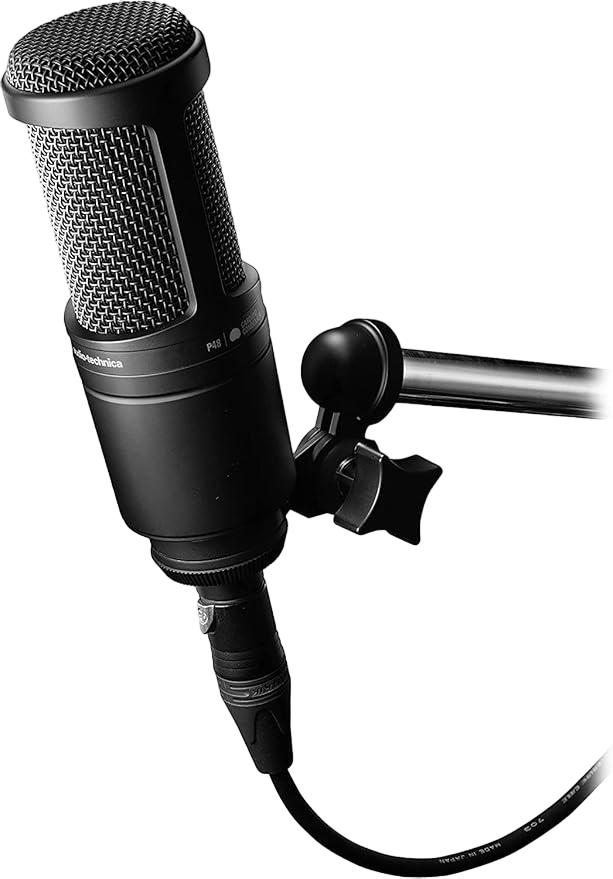
Another great option is the Rode PodMic, specifically designed for podcasters. It costs about $100 and delivers solid audio with good noise rejection. However, it lacks the versatility of the SM7B when it comes to tweaking the sound. I found it perfect for casual setups but missed the rich, studio-quality tone that the SM7B delivers.
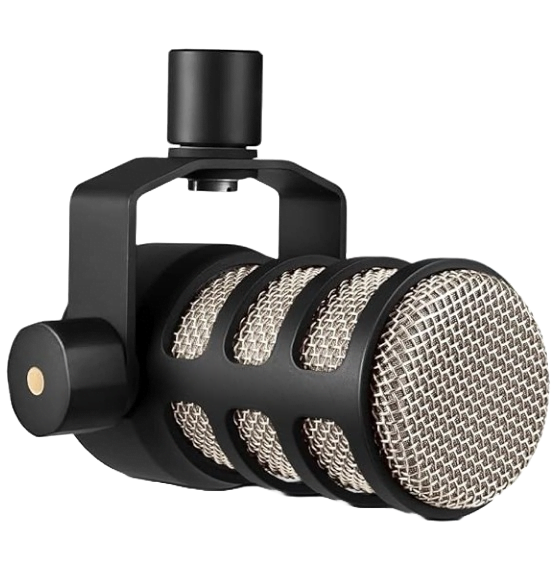
For those who want something close to the Shure SM7B without the price tag, the Electro-Voice RE320 is worth considering. It’s around $300 and offers a dynamic sound similar to the SM7B. It also doesn’t require as much gain, which means you might not need a Cloudlifter. When I tested it, I loved how it handled my voice, but its build didn’t feel as robust as the SM7B’s tank-like durability.
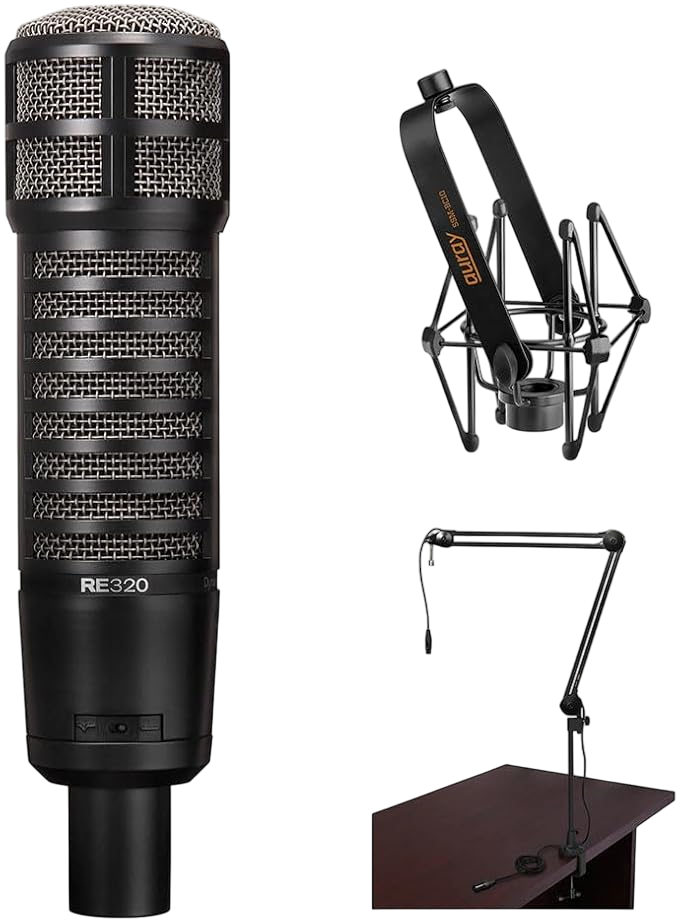
Each alternative has its pros and cons, but they’re all solid picks depending on your needs and budget. If you’re just starting, the AT2020 or PodMic might be all you need. For those aiming for near-professional quality at a lower price, the RE320 is a fantastic middle ground. Ultimately, the best microphone is the one that fits your space, budget, and recording style.
Conclusion
Ultimately, The Joe Rogan Microphone and his setup is ideal if you’re serious about professional podcasting and ready to invest. But don’t feel pressured to replicate it exactly—it’s more about finding the gear that fits your current needs. Start small, learn as you go, and upgrade when it makes sense. Quality podcasts come from great content first, and the right mic only enhances it.
Podcasting is a different game, and without a precise blueprint, the game will get tougher midway. Grow your podcast from scratch with Zero Audience and learn about how successful podcasters cracked the code by winning our Free Guide with step by step Guidelines.
Get your complete podcast equipment setup by visiting Podcast Equipment Bundle. Don’t let the side projects kill your time. Get in touch with podcasting services and experts those will save you tons of time at Podcast Production Services.
With that being said, Let’s connect with all such free and paid tool/services you might need knowingly or unknowingly to fuel your growth. Here’s 21 BEST AI TOOLS AND PLATFORMS TO GROW YOUR PODCAST AND CONTENTS. There are some bonus tools in the end too to make your day to day life easier.
There are some affiliate links on this page that will redirect you directly to the original products and services. Also by buying through those links you will be supporting us. So thank you ^.^
